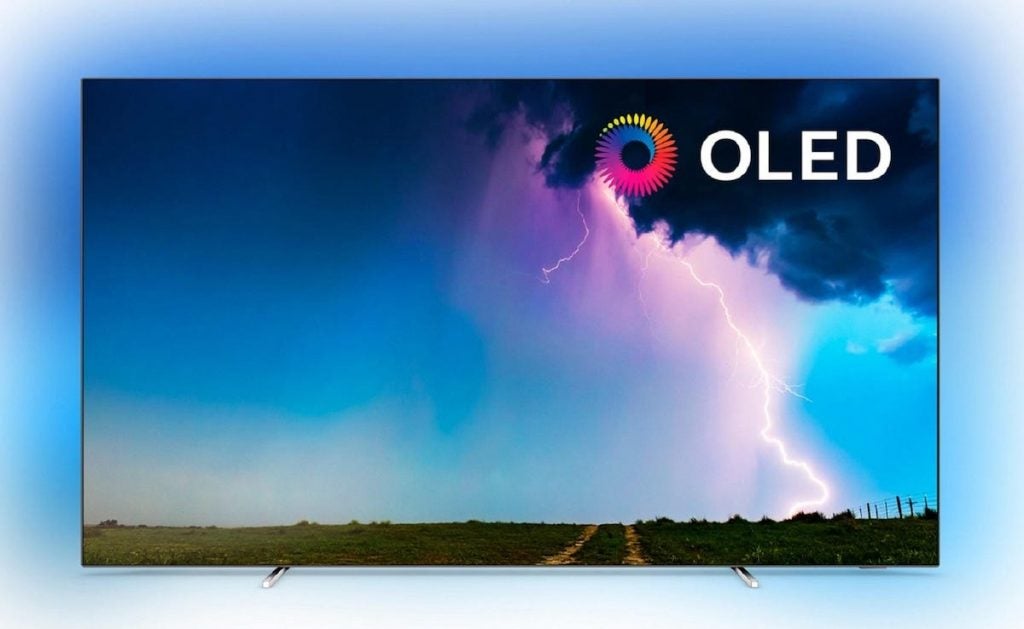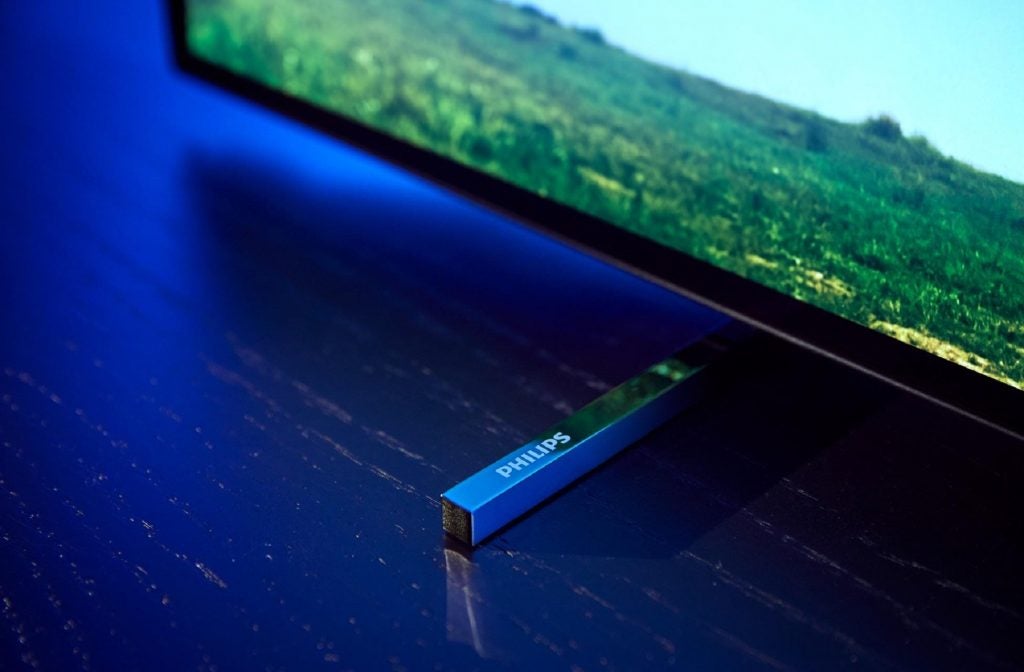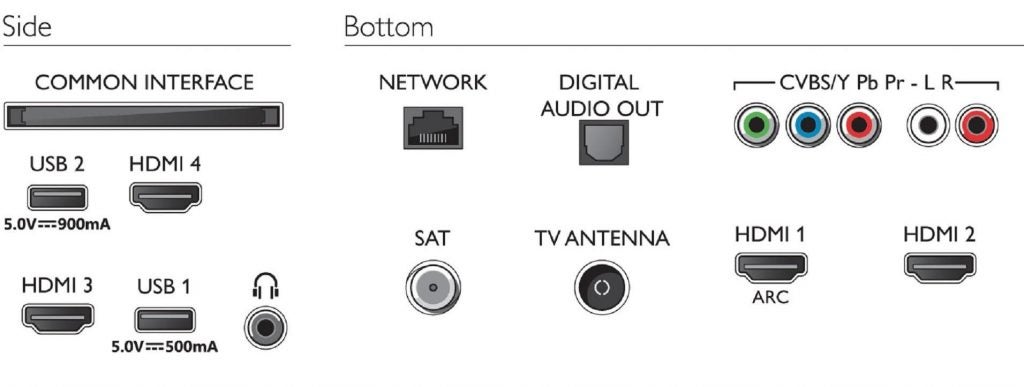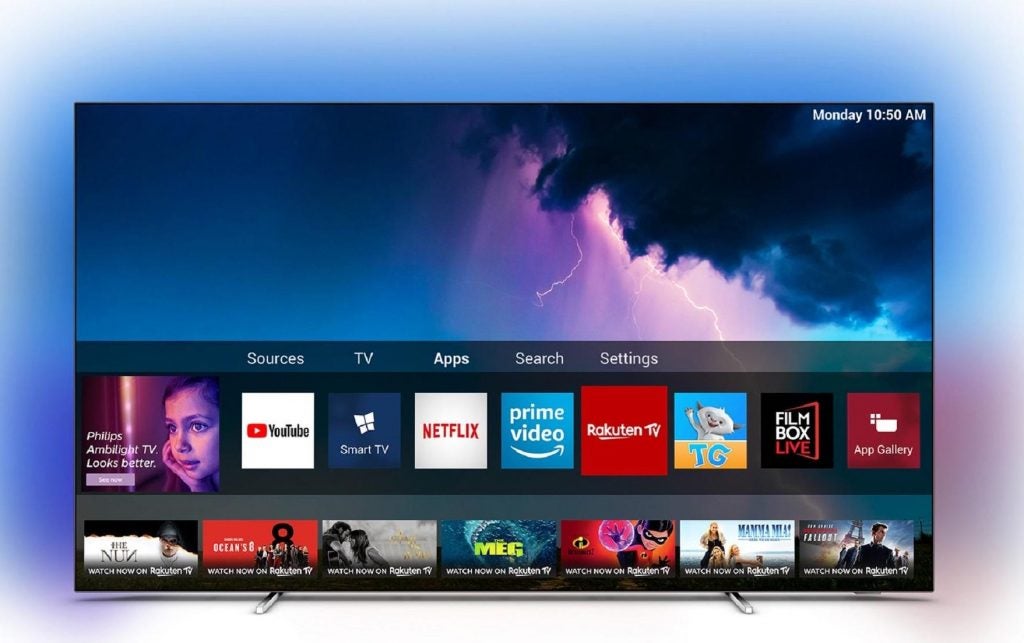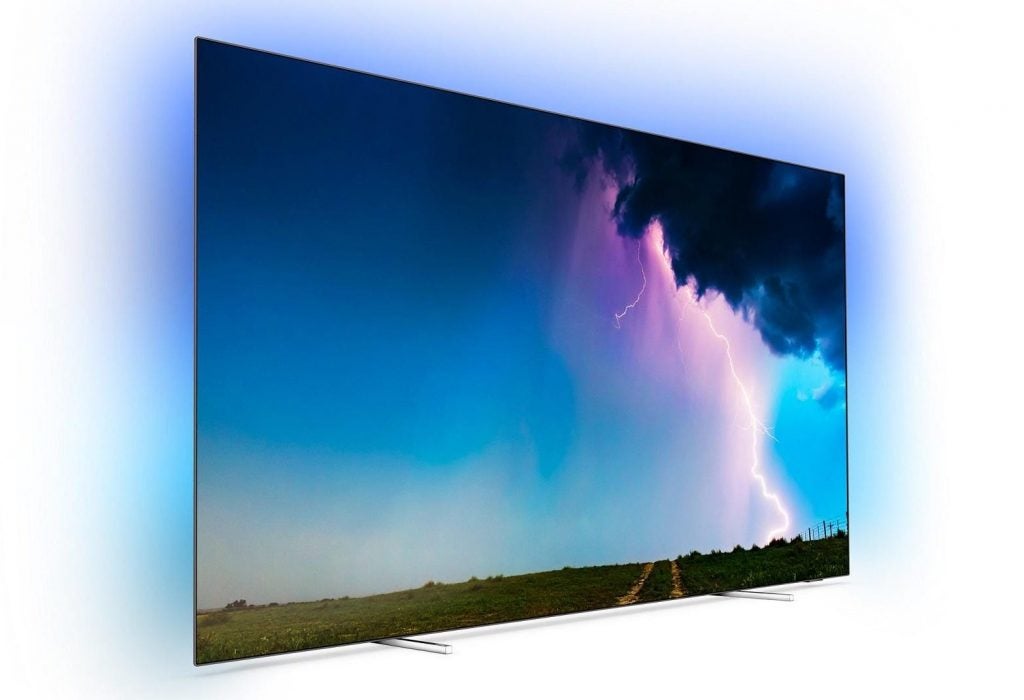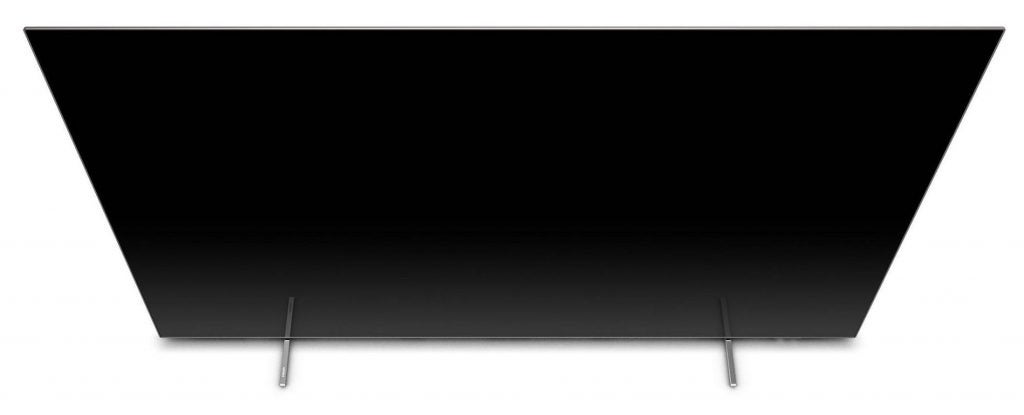Philips 65OLED754 Review
Philips 65OLED754 Review
A 65in OLED TV with Ambilight and high-level picture processing for just £1650
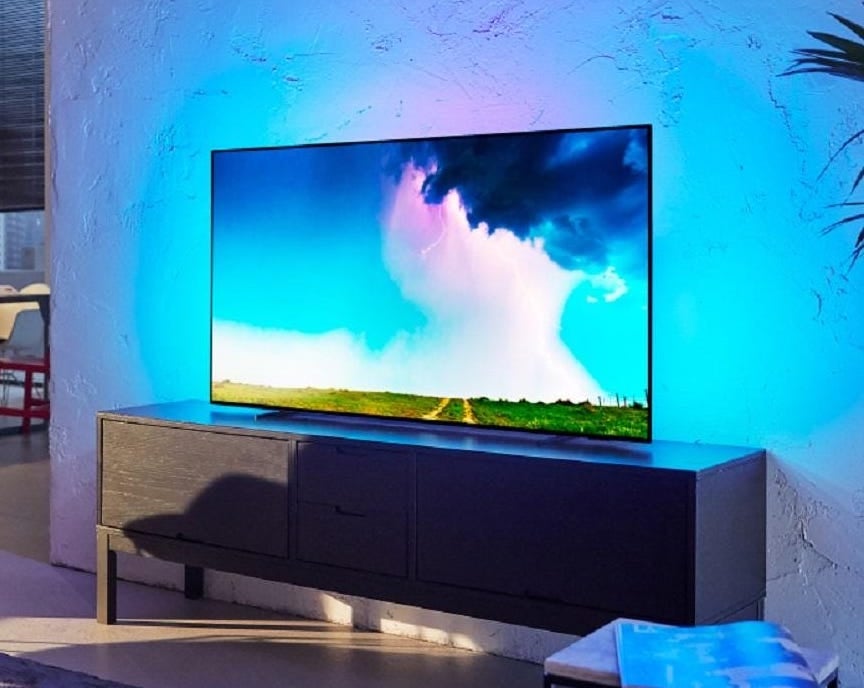
Verdict
Getting such superb picture quality and design refinement for so little money makes the Philips 65OLED754 a serious home cinema bargain
Pros
- Great value for what's on offer
- Gorgeous design for its money
- Impressive and flexible video processing
Cons
- Buggy and occasionally sluggish operating system
- Some noise with certain streamed sources
- Complicated menus and requires regular visits to the menus to get the best from it.
Key Specifications
- Review Price: £1650
- 65inches
- Native 4K resolution
- Saphi smart system
- Three-sided Ambilight design
- P5 picture processor
What is the Philips 65OLED754?
The Philips 65OLED754 is potentially the answer to many cash-strapped AV fans’ prayers. Turning the tech dial back a touch has enabled Philips to offer its consistently impressive OLED picture quality at the new low price of just £1649. The 55in model costs just £1300.
But is it really as great a deal as it seems – or have too many corners been cut?
Related: Best TVs
Philips 65OLED754 design and build quality – Ultra-slim and superbly sturdy
The Philips 65OLED754 sports a fairly simple design compared with other Philips OLED TVs, but this isn’t necessarily a negative. The combination of a screen in a very slim frame that sits low on a pair of ultra-low-profile silver feet adds up to one of the most pleasingly minimal designs I’ve seen.
Add to this an ultra-slim rear – at least at the screen’s edges – and you have a design that gives no hint about its entry-level OLED status.
Build quality is excellent for the money, too. Especially since it is found carrying the same brushed metal backplate as the step-up 8 and 9 series models.
Surprisingly, the 65OLED754 joins its step-up siblings by carrying a three-sided version of Philips’ Ambilight technology. This uses rear-mounted LEDs to cast coloured light onto the wall behind the TV. You can either manually set the Ambilight colour to one that suits your decor or tastes, or you can have it track the local colour content of the image being shown – which it does with startling accuracy.
This model’s remote control isn’t as glamorous as the gleaming silver, metal-finished handsets further up the Philips range. It’s a lightweight, plasticky black effort. And unlike Philips’ premium handsets, there’s no full qwerty keyboard on its rear side.
Aside from the indistinct volume and channel up/down buttons, however, it isn’t poorly laid out. It also carries dedicated Netflix and Rakuten TV buttons, and – unexpectedly – a built-in mic, so you can issue verbal instructions to the TV. Note that the Philips 65OLED754 doesn’t include a far-field mic.
Philips 65OLED754 features – The superb P5 engine and a decent array of connections are welcome
The main attractions of the Philips 65OLED754 are its eye-catching design and its relative cheapness for OLED technology,
However, it also boasts Philips’ P5 picture processing engine. This isn’t the third-gen P5 found on the recently reviewed 65OLED934; but even the second-gen version is still remarkably powerful.
Related: Best 4K TVs
The P5 name refers to what Philips sees as the five pillars of picture quality: source detection, motion, sharpness, contrast and colour. And the P5 engine applies a heady brew of picture enhancement algorithms to each of these five areas to try to get the best results from any source.
It applies each of these processing stages in what Philips judges to be the optimal order, and fits all the processing stages onto a single chip for enhanced efficiency and effectiveness. You can’t control every single element of the P5 system, but Philips does provide an extensive suite of adjustments.
There’s no sign of cost-cutting with the Philips 65OLED754’s connections. There are still four HDMIs, all of which support 4K HDR at up to 60Hz. There’s no HDMI 2.1 support for 4K up to 120Hz, which may limit the TV’s performance with some titles on the next generation of games consoles. In truth, though, the situations where this might be an issue are likely to be limited.
The Philips 65OLED754’s smart features are delivered by Philips’ Linux-based Saphi system; not the Android TV platform found on the brand’s step-up OLED models.
In some ways, this isn’t a bad thing. For instance, the Saphi interface replaces the annoying full-screen interface of Android TV with a sleeker tiered menu that only occupies around the bottom third of the screen.
It’s nice, too, to see Saphi supporting two things Android TV doesn’t: all of the UK’s key catch-up TV apps, and the Freeview Play app for integrating those catch-up apps into a single, easy-to-use package.
The Amazon and Netflix Saphi apps both support 4K and HDR. In fact, they support the Dolby Vision “dynamic” HDR system on both Netflix and Amazon, and the dynamic HDR10+ system on Amazon.
The Philips 65OLED754 also plays both HDR10+ and Dolby Vision content. This is on top of support for the industry standard HDR10 , and the broadcast-based HLG HDR system. Now if only LG, Sony and Samsung could start thinking so inclusively with their HDR strategies.
Philips 65OLED754 setup – Two levels of adjustments mean fine-tuning can be tricky
As usual with Philips TVs, the Philips 65OLED754 can be complicated to use if you really want to get the best performance out of it.
Philips has tried to make things easier by offering two levels of picture adjustment; but I’d argue that this actually make things even more complicated. Especially since Philips’ picture adjustment menu structure is far from easy to follow.
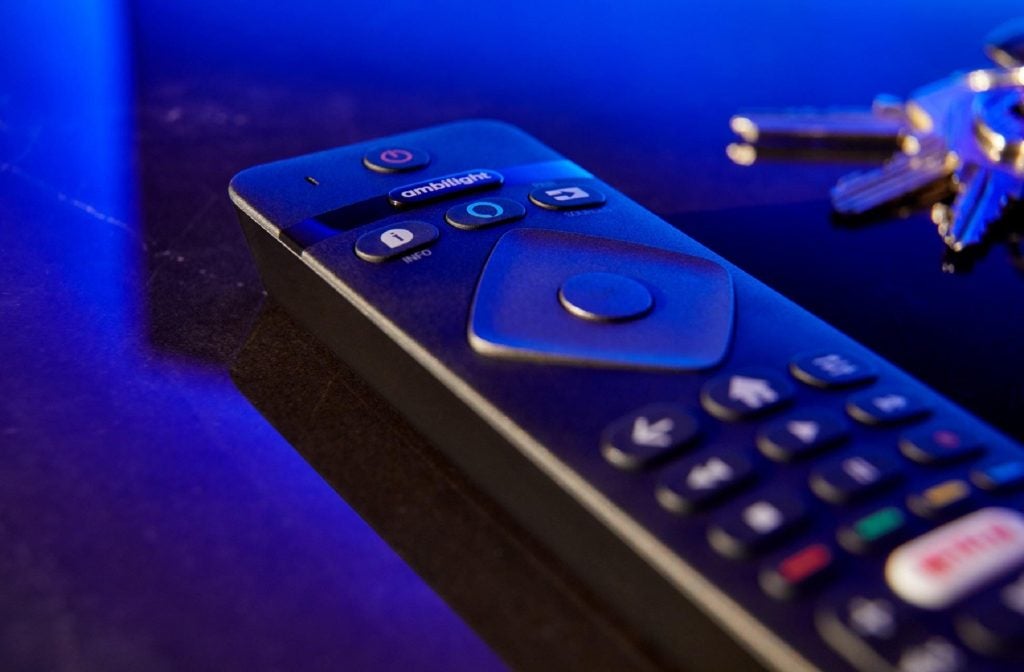
The remote control that comes with this model isn’t as “premium” as those supplied with Philips’ step-up models.
A couple of the picture presets give you something of a shortcut at least. Movie mode turns off much of the processing for an AV enthusiast-friendly “direct” experience with film sources, while the default Standard mode is a solid starting point for normal broadcasts – or, actually, films for people who prefer punchy, sharp, richly saturated, high-contrast images.
However, if you opt for the Movie mode then be prepared for colours to look quite desaturated, the picture to feel relatively flat, and images to feel markedly softer than in Standard mode. Yet, if you use the Standard mode, you should treat some of the processing elements with care. I’d recommend reducing most of the processing settings to minimum, and the motion setting to Movie when watching 24p sources.
One slightly strange feature is the Contrast mode. You might think that this mode’s “Optimized For Picture” setting would deliver the punchiest HDR image. Actually, it’s the Normal setting that delivers the most measurably bright highlights and picture. For instance, in Normal Contrast Mode the Vivid Picture preset serves up around 630 nits of brightness on a white HDR window occupying 10% of the screen. Yet, if you set the Contrast mode to Best For Picture, the Standard HDR picture preset measures 553 nits.
Similarly, in Movie picture preset you get 640 nits in the Normal Contrast Mode setting, and 570 nits in the Optimized for Picture contrast setting.
There seems to be a greater tendency for bright parts of the image to clip slightly in Normal Contrast Mode, though. Also, the Optimized for Picture setting looks like it’s overall more dynamic; Normal mode goes for a brighter average light level, with less overall dynamic range.
One last thing to mention is the Philips 65OLED754’s noise reduction systems. For most content you’re best turning them off – especially when watching native 4K and high-quality HD sources. However, the way Philips’ P5 processor is organised – in a strict sequential order – means that a drastic adjustment in one stage of the processing can lead to tweaking other settings further down the processing road.
Philips 65OLED754 performance – Impressive pictures, but the OS can be a little sluggish
The 65OLED754’s menus and smart features can run rather sluggishly. At times, menus took as much as seven seconds to pop up after a button press.
I also found some functionality frustratingly obscure. For instance, getting back to the TV tuner after using a different source can only be achieved via two menu steps. And even then it isn’t obvious when you first try to find it. Note, too, that the smart menus contain adverts, which eat up screen real estate that might have been employed for more useful things.
The operating system suffered a bug or two during testing, too. Once, for instance, I couldn’t quit a show I was watching on Netflix without turning off the TV. Sometimes, 4K Blu-ray soundtracks played with lots of static sound interference. And the TV repeatedly asked me to confirm my “antenna installation” – even when switching to a source that wasn’t the tuner. Philips has a decent track record of regularly delivering bug-fixing firmware updates, though.
When it comes to picture quality, the Philips 65OLED754 is on much safer ground. It delivers all of OLED’s black level, contrast and viewing angle advantages, as well as much of the potent processing enhancement seen on the 65OLED934.
The legendarily dark “The Long Night” episode of Game Of Thrones (Episode 3, Season 8) on 4K Blu-ray is superbly well handled. You get deep black colours, but you can also see excellent shadow detail in everything from the night skies to John Snow’s black hair and dark fur cloak. And it’s great to see no hint of the magenta tint from which some OLED TVs suffer.
You feel an excellent sense of depth and scale on the battlefield, rather than the flat grey muddle lesser TVs can show with so much of this cinematically mastered Game Of Thrones episode.
Blacks don’t push quite as dark as they do on the Philips OLED934s, and the occasional shot – usually one featuring dark grey clouds or a lot of smoke – exposes signs of faint vertical banding.
Overall, though, the Philips 65OLED754 is still an outstanding effort with what is some of the most difficult content any TV can be faced with. Certainly, there’s no LCD TV out there that can compete with it when it comes to delivering such great contrast without suffering either black crush or backlight blooming around stand-out bright objects.
The best LCD TVs and Philips’ higher-grade OLEDs can make bright highlights look lighter. But the all-round image balance of the 65OLED754 is superb for its money.
The Long Night is great content, too, for reminding us that OLED screens lose no contrast or colour saturation even if watched from an angle. Some LCD TVs have started to offer this functionality as well, but only at the expense of either contrast or a little resolution.
Provided you turn its noise reduction systems off, the Philips 65OLED754 handles the tricky motion in The Long Night exceptionally well if you use the Movie motion setting. This part of the processing takes away the worst of the judder OLED technology can cause, without generating unwanted processing artefacts or leaving the picture looking unnatural or un-cinematically smooth.
Philips’ processing is so assured, in fact, that you can even give the episode a crisper look via the TV’s Ultra Resolution tool without the image starting to look gritty or stressed.
It should be said that The Long Night’s support for Dolby Vision helps the Philips 65OLED754 a little. The image looked a little less precise and subtly detailed in dark areas with Dolby Vision off – although the “standard” HDR10 results are actually still excellent.
It’s great to see Philips taking a format-neutral approach to HDR; even on an entry-level OLED TV it still supports all the available dynamic HDR formats.
The 65OLED754 also manages to retain Philips’ advantage when it comes to giving more apparent brightness and intensity to peak bright areas of the image than most OLED TVs. For instance, sun reflecting off metal or faces, bright clouds or even really tiny “specular” highlights (such as the drops of water that fly around when Furiosa hits Mad Max with a water hose in Fury Road) all burst off the screen in a way no other similarly affordable OLED TV I’ve seen to date can match.
Detail levels with native 4K and upscaled HD images are pretty exemplary. Some rough-looking picture sources, such as some of the skies in the Mad Max: Fury Road 4K Blu-ray, can look a little gritty and grainy. But where this is an issue, you can manage it with the Low noise reduction setting at the expense of only a small increase in potential smearing side effects.
Colours in Standard picture preset are rich and bold, but still typically feel balanced and believable. Since they also maintain subtle touches and shading alongside their richness, I suspect many Philips 65OLED754 buyers will pick a tweaked Standard mode over the more straightforwardly accurate but less exciting Movie mode.
Another attribute of the Philips 65OLED754’s processing is its ability to convert HD SDR sources to 4K HDR ones. The resolution upscaling is remarkable, delivering crisper and more detailed results than any other upscaling engine I’ve seen bar the third-gen P5 engine on Philips’ step up OLED sets. And the way the HDR upconversion manages to expand the image’s dynamic range without it looking fake or causing colours to become imbalanced is as impressive as it is spectacular.
I should stress, of course, that you can turn off the Perfect Natural Reality HDR upscaling system if you’d prefer. But I’d urge even the biggest stickler for accuracy to at least take Perfect Natural Reality with SDR for a spin.
If there’s anything that reveals the Philips 65OLED754 is using an older processing system than the OLED934 range, it’s the way it handles a few tricky image elements.
Skin tones occasionally look a little less natural (slightly sunburnt/fake-tanny). Noise and grain in sources, both 4K and HD, is handled a little less elegantly, too. And, as noted in passing earlier, Philips’ new step-up models do a slightly better job with their dynamic tone mapping when dealing with static HDR10 sources, delivering slightly more refined, balanced and generally brighter images.
Finally, the Philips 65OLED754 exhibits more grey blocking interference with some streamed content than the 65OLED934 – especially during the infamous “peeping tom” scene between 35:27 and 36:33 in Vikings Episode 12 of Season 5 Part 2. There’s slightly more flashing/instability, too, over gently changing dark colours (such as in the fade in at 21mins 30 secs in Episode 8 of Season 3 of The Last Kingdom) on the entry-level OLED model.
When it comes to gaming, the Philips 65OLED754 is decent. It provides a Game mode, and manages to retain more colour and contrast in that mode than some rivals. However, input lag only gets down to around 32.6ms – hardly excessive, but almost double what we’re seeing from Samsung and LG these days.
The Philips 65OLED754 predictably doesn’t sound as good as the 65OLED934. After all, the cheaper model doesn’t ship with a Bowers & Wilkins-designed external soundbar like its more expensive sibling. However, there is a substantial-looking set of mid-range and bass drivers on the TV’s rear. And, in fact, the TV still sounds unexpectedly good for a set with such a minimalistic design.
Voices are particularly impressive. They somehow seem to project forward from the screen rather than being swallowed behind it, especially with Philips’ AI setting in play. And they seem to be locked to the screen, where they should be, rather than muddled in with everything else.
The soundstage also has a reasonable amount of scale to it, extending beyond the screen’s left and right sides, and even generating a mild sense of height.
Effects sound a touch general versus the accurate placement you get with the superb-sounding OLED934. Maximum volume levels are a little limited, too. But bass is clean and reaches a little deeper than expected, and there’s no hint of distortion, drop-out, crackling or cabinet rattle.
Should I buy the Philips 65OLED754?
If you have a spare £550 lying around, by all means spend it on a Philips 65OLED804. That way you can get Philips’ very latest picture processing system and Android TV. And if you want a fantastic built-in sound bar alongside that latest picture processing and Android TV, then by all means feel free to cough up the best part of £1000 more for the 65OLED934.
However, even talking about those prices underlines to me what great value the Philips 65OLED754 offers. Yes, you can get similarly large LCD TVs for less, of course; quite a bit less, in fact. But the picture quality and design prowess the 65OLED754 provides for its money really does make it feel like a bargain.
How we test televisions
We test every TV we review thoroughly over an extended period of time. We use industry standard tests to compare features properly. We’ll always tell you what we find. We never, ever, accept money to review a product.
Trusted Score
Score in detail
-
Features 9
-
Value 9
-
Smart TV 7
-
Image Quality 9
-
Design 9
-
Sound Quality 8
Features
| Size (Inch) | 65 |
| Display Type | OLED |
| Max. Resolution | 3840 x 2160 |
| Full HD 1080p | Yes (actually 4K) |
| Digital Tuner | Yes |
| Freeview HD | Yes |
| 3D Ready | No |
| Refresh Rate (Hertz) | 100 |
Connectivity
| HDMI | 4 |
| Digital Audio Out | Yes (optical) |
| Headphone | Yes |
| Ethernet | Yes |
| WiFi | Yes (built in) |
Physical Specifications
| Height (Millimeter) | 830 |
| Width (Millimeter) | 1449 |
| Depth (Millimeter) | 49 |
| Weight (Gram) | 27900 |

